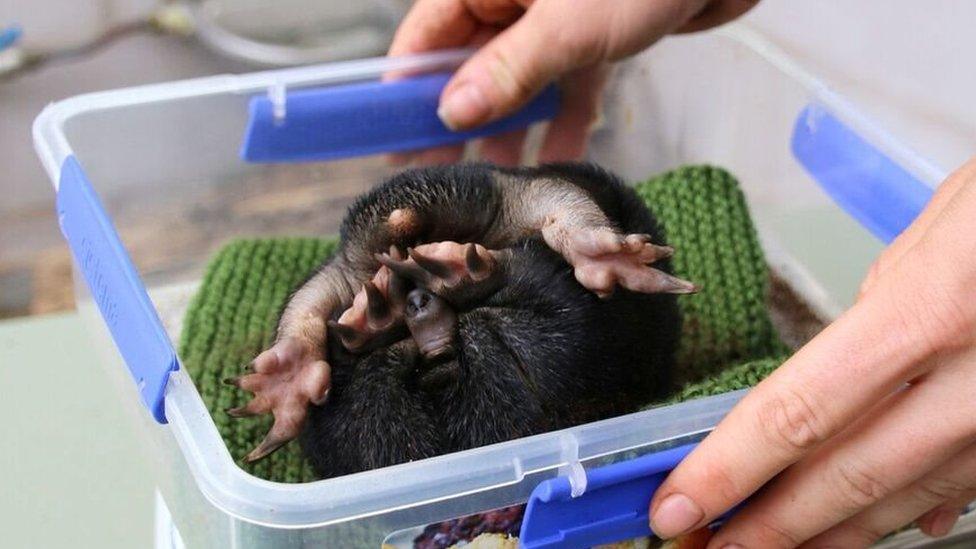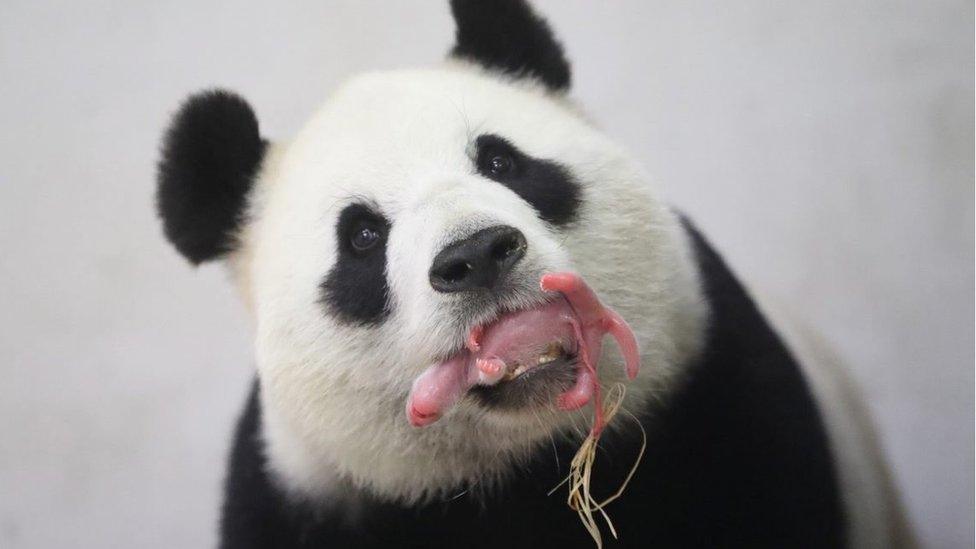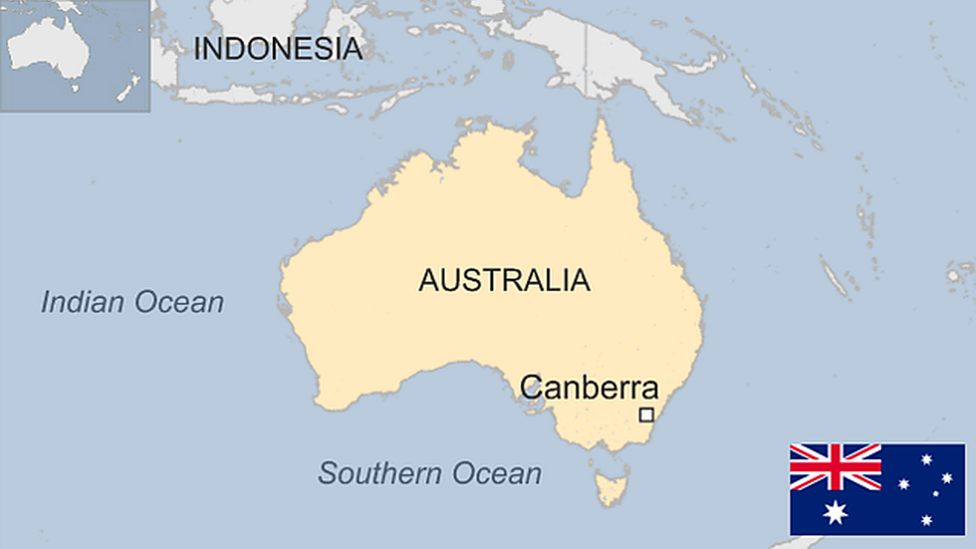Australia echidnas: Sydney zoo celebrates first puggle births in decades
- Published
Video of the puggles being weighed
Sydney's Taronga Zoo is celebrating its first baby echidnas, or puggles as they are better known, in almost 30 years.
The three babies hatched from their eggs in August but keepers wanted to see them grow before going public.
"Echidnas are notoriously difficult to breed in human care, but keepers are pleased with the progress of the tiny trio," the zoo said.
The puggles have opened their eyes and are developing the spines characteristic of their species.
They have yet to be named by the keepers but are not expected to leave their burrows until early next year. Until then they will be mostly sleeping.

The puggles have now opened their eyes.
The zoo has built special nursery burrows to house the arrivals as part of its new echidna-breeding facility.
The smallest puggle currently weighs about 250g (9oz).
Echidnas are one of only two Australian mammals that lay eggs (the other is the duck-billed platypus).
The baby echidnas hatch after 10 days and are carried around by their mothers in a pouch-like skin fold for up to two months.
How echidnas sleep through bush fires
After that they are placed in their burrows, with the mother returning to feed them every few days.
The three puggles have different mothers. The youngest puggle was born to mother Pitpa, who was the last echidna born at Taronga in 1987.

Puggles are said to be hard to breed in captivity.
"All three mothers are doing an amazing job and tending to their puggles as needed," said zoo keeper Suzie Lemon.
"A great deal of mystery still surrounds this spiny species. Echidnas are quite elusive in the wild, so it's hard to study their natural breeding behaviours."
- Published2 June 2016

- Published3 August 2016

- Published14 April 2023
